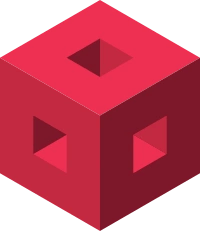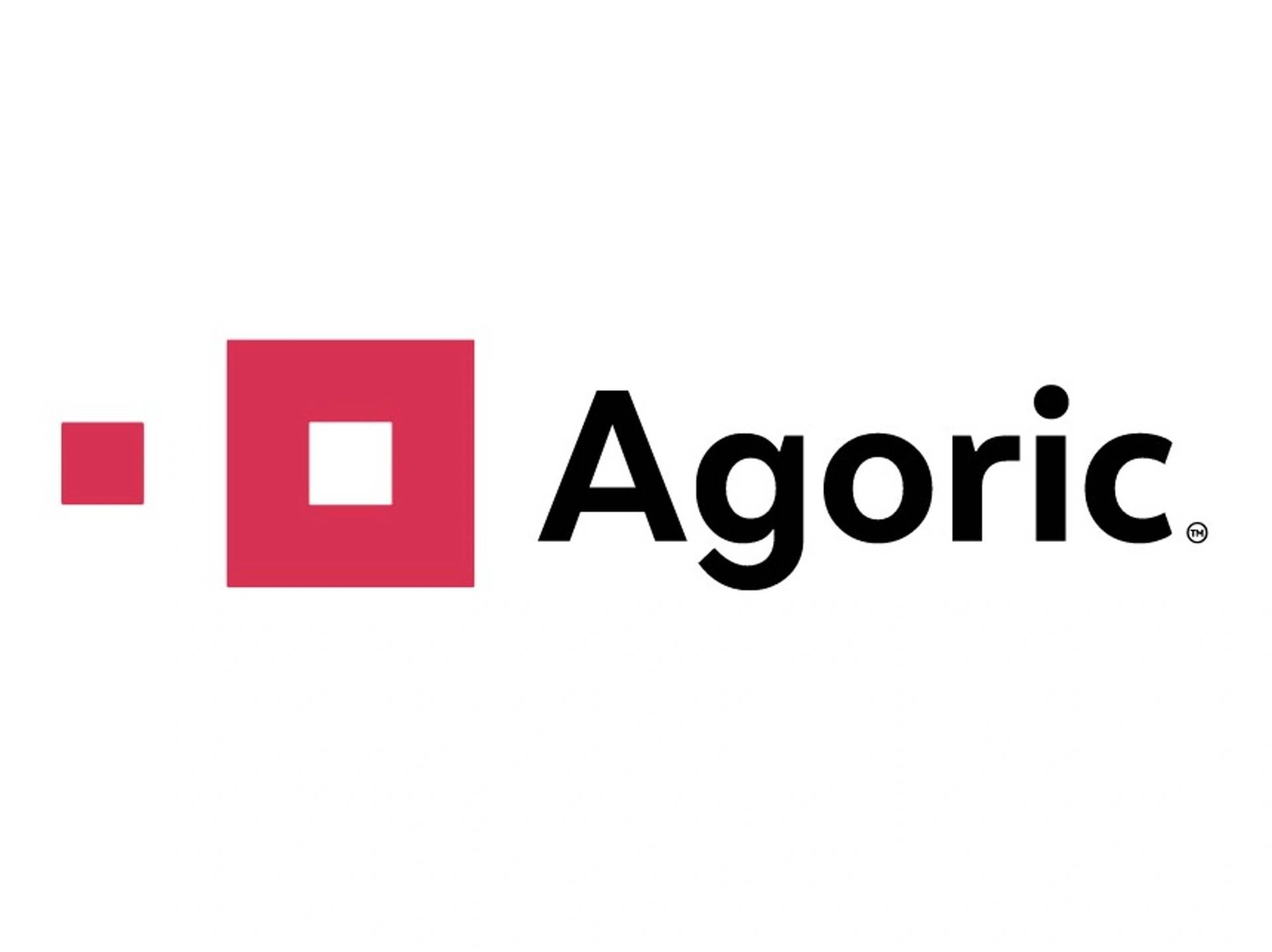Subscribe to wiki
Share wiki
Bookmark
Agoric
Agoric
Agoric is a Cosmos-based Layer 1 blockchain that aims to support the development of cross-chain smart contracts using JavaScript.[1]
Overview
Agoric, founded in 2018, is a Cosmos-based Layer 1 blockchain that aims to support the development of cross-chain smart contracts using JavaScript. It focuses on improving secure smart contract creation through its object-capability (ocap) programming layer.
Built on the CometBFT consensus system, Agoric facilitates Inter-Blockchain Communication (IBC) for cross-chain interactions. The native token BLD is used for staking and governance, while IST is used for network fees. Agoric also includes Zoe, an escrow service designed to enable secure contract interactions and support applications, NFTs, and DeFi markets.[1][2][3][4][5]
History
Agoric's roots go back to 1988 when Mark S. Miller co-authored the Agoric Open Systems papers, which outlined concepts for decentralized computational markets and object capabilities (ocaps). Over the next 15 years, Miller and Dean Tribble collaborated on secure computing projects.
In 2018, Agoric was established by Miller, Tribble, Bill Tulloh, and Brian Warner. The project aims to develop a Proof-of-Stake blockchain with JavaScript smart contracts, focusing on enabling decentralized finance (DeFi) applications and incorporating a stable token for economic activity and staking rewards.[4]
Products
Orchestration
Agoric aims to facilitate multi-chain application development through its Orchestration framework, which enhances user interactions across various blockchains. This framework allows smart contracts to employ async/await and multi-block execution for improved cross-chain communication.
Through timer services, smart contracts can autonomously execute tasks, while connections to the Inter-Blockchain Communication protocol (IBC) aim to provide broader access to liquidity. Smart contracts, written in a secured variant of JavaScript, focus on safety and composability.
For instance, users may transfer MATIC from the Polygon network to stake ATOM on the Cosmos Hub in a single transaction. Agoric's emphasis on DeFi aims to improve liquidity access and establish multi-chain connectivity.[11][12]
Agoric Platform
The Agoric platform comprises several components designed to support decentralized applications and smart contracts. SwingSet serves as a distributed JavaScript environment that organizes execution into vats, allowing secure, asynchronous communication and persistent state storage. It operates on the Cosmos SDK, which integrates with the Cosmos blockchain framework.
Inter-Blockchain Communication (IBC) enables messaging between different blockchains, while Dynamic IBC (dIBC) aims to facilitate the deployment of new protocols without requiring platform upgrades. Tendermint functions as the consensus engine, defining how blocks are created and agreed upon.[6]
Architecture
Zoe
Zoe is a service and smart contract API that aims to improve secure asset trading while minimizing risks for users and developers. It ensures that users either receive their desired assets or a full refund, even if a contract fails.
The trading process involves users making an offer with an invitation, proposal, and assets. Zoe escrows the assets, relays them to the relevant contract, reallocates them, and completes the offers.
Zoe supports various contracts, including Automated Market Makers (AMMs) and token minting. It seeks to enhance blockchain commerce by providing safety features, simplifying contract creation, and clarifying terms.
Additionally, Zoe allows wallets to enable more interactive experiences with decentralized applications (dApps) for secure offer approvals.[7][8]
ERTP
Agoric's Electronic Rights Transfer Protocol (ERTP) is a JavaScript standard designed to facilitate the transfer of digital assets. It aims to support the creation of fungible, non-fungible, and semi-fungible assets by utilizing object capabilities (OCaps) for secure access control.
Assets are represented as Amount records, which consist of a brand and a value. Brands categorize asset types, while values indicate quantities. The AmountMath library aims to support basic operations, linking each asset brand to a unique mint and issuer.
Digital assets are managed through purses for storage and payments for transfers, with secure transactions requiring matching deposit facets. Non-fungible assets, such as theater tickets, can be minted with specific attributes. Overall, ERTP aims to streamline digital asset management while ensuring security.[9]
Agoric VM
Agoric's architecture is built around the Agoric Virtual Machine (VM), a secure JavaScript runtime that aims to enforce Object-Capability (OCap) principles for safe code composition. This integration allows front-end developers to utilize familiar tools while back-end developers can work within a secure framework.
The OCap model seeks to protect object encapsulation and control communication, extending security across systems to support safe interactions between blockchains. Additionally, Agoric aims to improve efficiency in blockchain development by enabling npm-style code reuse while addressing the associated security risks.[10]
Cosmos/Tendermint
The Agoric VM is designed to function independently of its consensus protocol, allowing the Agoric chain to implement the most appropriate consensus engine. Initially, it aims to launch as a sovereign blockchain within the Cosmos ecosystem, utilizing the Tendermint consensus engine, which seeks to achieve fast throughput and finality through its Byzantine Fault Tolerance (BFT) mechanism.[10]
Dynamic IBC
The Inter-Blockchain Communication protocol (IBC), co-developed by Agoric, aims to enable the Agoric programming model to function across various blockchains. It seeks to provide Agoric chain users with access to protocols, liquidity, and assets in the Cosmos ecosystem and beyond, including planned connections to Polkadot and asset pegging from Zcash, Ethereum, and Bitcoin. IBC facilitates the transfer of external financial assets to the Agoric chain for DeFi protocols, loan collateralization, staking, and trading, while allowing Agoric assets and smart contracts to interact with other blockchains.[10]
Use Cases
Agoric provides various use cases for users and developers within the Web3 ecosystem.
- For Users: Agoric aims to facilitate seamless interactions across multiple blockchains, improving the overall Web3 experience.
- For Developers: Agoric seeks to offer cross-chain programmability and multi-block execution, enabling the development of advanced applications.[13]
Tokenomics
Agoric Stable Token ($IST)
Agoric's IST is an IBC-enabled stable currency that aims to maintain parity with the US dollar, serving as a medium of exchange within the Agoric ecosystem and providing stability across the IBC network. As an over-collateralized, risk-managed token, IST is designed for use within the Cosmos and interchain ecosystems.
IST functions as the native fee token for the Agoric chain, facilitating transactions and supporting platform functionality for users and developers.[10][14]
Inter Protocol
The Inter Protocol includes contracts on the Agoric blockchain that manage the minting, burning, stability mechanisms, and governance of the Inter Stable Token (IST). It aims to facilitate effective management of IST within the Agoric ecosystem.[18]
Use Cases
IST serves essential functions within the Agoric ecosystem and the broader Cosmos and IBC environments. Key use cases include:
- Vault Creation: Users aim to create over-collateralized Vaults by depositing assets such as ATOM or stATOM to mint IST while retaining their original positions.
- Parity Stability Module (PSM): The PSM facilitates the minting and redemption of external stable tokens for IST at a 1-to-1 ratio, subject to governance-approved limits.
- Interchain Accessibility: IST aims to provide accessibility across all chains in the Cosmos and IBC ecosystems, assisting in transactions and interactions.
- Governance: An Economic Committee oversees IST's stability, while Agoric BLD stakers have the ability to vote on governance proposals related to the Inter Protocol.[14]
Agoric Native Token ($BLD)
BLD serves as the native token of the Agoric chain, facilitating staking, voting, wallet creation, and transaction fee payments. It aims to be compatible with self-custody wallets, institutional custodians, and both decentralized and centralized exchanges.
Staking BLD is intended to support transaction validation and network security, enabling holders to earn rewards while contributing to the blockchain's stability.[13][15][16]

Use Cases
BLD serves several essential functions within the Agoric ecosystem:
- Network Security: Staking BLD aims to validate transactions and maintain network stability.
- Governance Participation: BLD allows holders to vote on governance proposals, thereby influencing ecosystem development.
- Staking Rewards: Stakers may receive additional BLD tokens and fees from the Inter Protocol, which encourages ongoing participation.
- Wallet Support: BLD is designed to be compatible with various wallets, facilitating transactions within the Agoric network.[15]
Allocation
As of Q4 2023, the total supply of BLD tokens is 1,060,000,000. The initial distribution at network launch aims to support various aspects of the Agoric ecosystem as follows:
- Early Contributors: 186,000,000 BLD (18.6%) is allocated for development, with a four-year vesting schedule and a one-year cliff.
- Network & Decentralization: 170,000,000 BLD (17%) is designated to support programs aimed at launching and decentralizing the Agoric chain.
- Operations: 125,000,000 BLD (12.5%) is intended for future software development and growth initiatives.
- Foundation: 125,000,000 BLD (12.5%) is allocated for grant-making, community support, and advocacy efforts.
- Private Sale: 125,000,000 BLD (12.5%) is planned for development, with a vesting schedule of two to four years and a one-year cliff.
- Early Backers: 114,000,000 BLD (11.4%) is intended to provide initial support, following a two-year vesting and one-year cliff.
- Community & Ecosystem: 55,000,000 BLD (5.5%) is aimed at funding community initiatives and activities.
- Public Sale: 70,000,000 BLD (7%) is allocated for decentralization, with two vesting options: 1.5 years with a seven-month cliff or two years with an eleven-month cliff.
- Advisors: 30,000,000 BLD (3%) is designated for expert guidance, adhering to a four-year vesting schedule and a one-year cliff.[16]
Team
The Agoric team consists of professionals with diverse expertise contributing to the platform's development:
- Dean Tribble: Chief Executive Officer
- Michael Jablon: Chief Operating Officer
- Mark S. Miller: Chief Scientist
- Bill Tulloh: Economist
- Brian Warner: Engineering Lead
- Ivan Leichtling: VP of Engineering
- Iulia Mihailescu: VP of Marketing
- Rowland Graus: Director of Product
- Josh Downer: General Counsel
- Anthony Mandelli: Social Media & Content Manager
- Matthew O'Donnell: Director of Human Resources
- Brendan O'Toole: Senior Product Manager
- Jeet Raut: Partner Programs Manager
- Anjon Roy: Mainnet Partner Manager
- AJ Rumph: Technical Project Manager
- Raphael Salas: Security Engineer[17]
See something wrong?
